
The likelihood of Canada meeting its international and national climate commitments depends in no small part on decarbonizing the transportation sector — the largest source of greenhouse gas emissions after oil and gas.
Reducing emissions produced by trucks and buses needs to be a priority – they account for approximately 37% of overall transportation emissions and pollution generated by these vehicles is trending upward. Since 1990, emissions from medium- and heavy-duty vehicles (MHDVs) have nearly doubled and if current trends continue, MHDVs are expected to become the largest source of emissions in the transportation sector.
Efforts to transition to non-emitting trucks and buses in Canada’s 2030 Emissions Reduction Plan (ERP) includes a commitment that 35% of new MHDVs sold by manufacturers must be zero-emission (ZE) vehicles by 2035, and that 100% of all new sales of MHDVs (based on feasibility) are ZE by 2040. Canada along with 26 countries, has also signed an international pledge – Drive to Zero – to achieve 100% ZE MHDV sales by 2040.
However, our modelling shows that the federal government’s current suite of climate policies and programs will not advance the transition to ZE MHDVs at the pace required to reach these sales targets.
ZeroX2040: A multi-stage strategy for Canada
The Pembina Institute has developed the ZeroX2040 national strategy, Canada’s Pathway to Net-Zero for Medium- and Heavy-Duty Trucks and Buses, which provides guidance on how Canada can gradually turnover its fossil-fuelled MHDVs to ZE ones by 2040.
Broken down into a two-part report series, we provide more than 20 policy recommendations to overcome the planning gaps and market uncertainties surrounding the availability of MHDVs and the necessary infrastructure to support adoption.
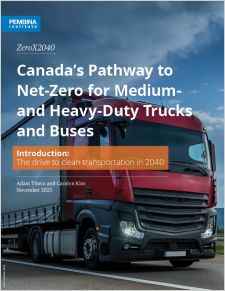 |
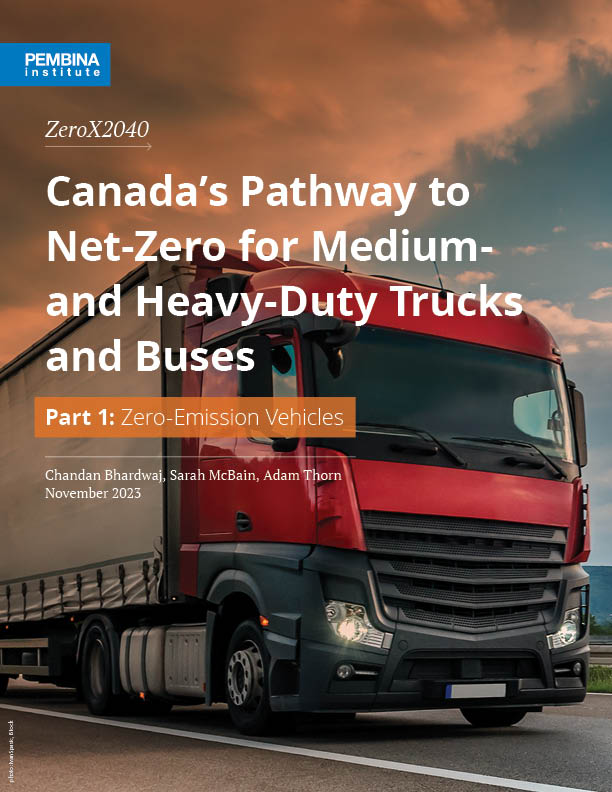 |
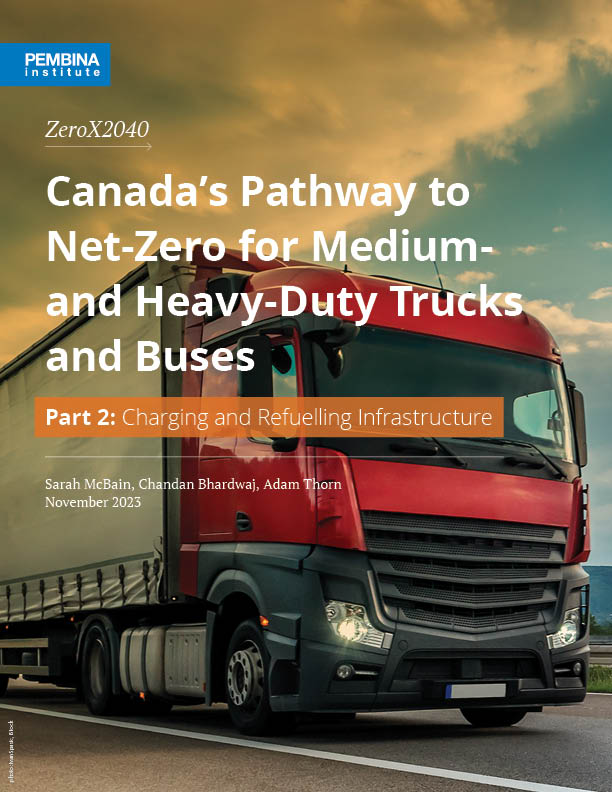 |
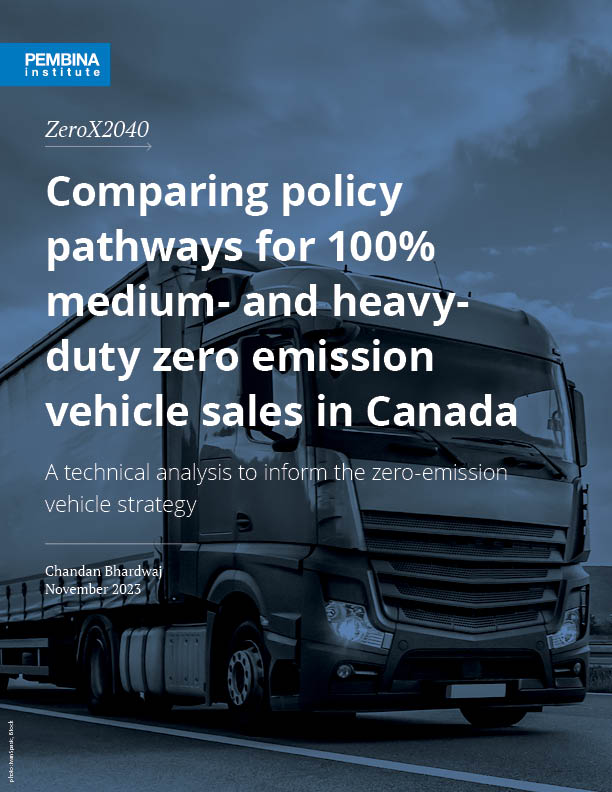 |
Visual data for the ZeroX2040 strategy
- Zero-emission MHDVs in Canada and required charging infrastructure
- Zero-emission MHDVs and oil demand in Canada
- Global electric vehicles and oil demand
Central to our recommendations is that Canada implement a strong sales standard. The ZeroX2040 strategy twins the sales standard with infrastructure build-out, advising that development sync with the anticipated number of ZE trucks and buses on the road.
By implementing our policy recommendations including the advised sales targets, MHDV carbon emissions would decline from 35 Mt in 2020 to 10 Mt or less by mid-century and would drop by as much as 80% by 2050 relative to 2020 levels (see graph below).
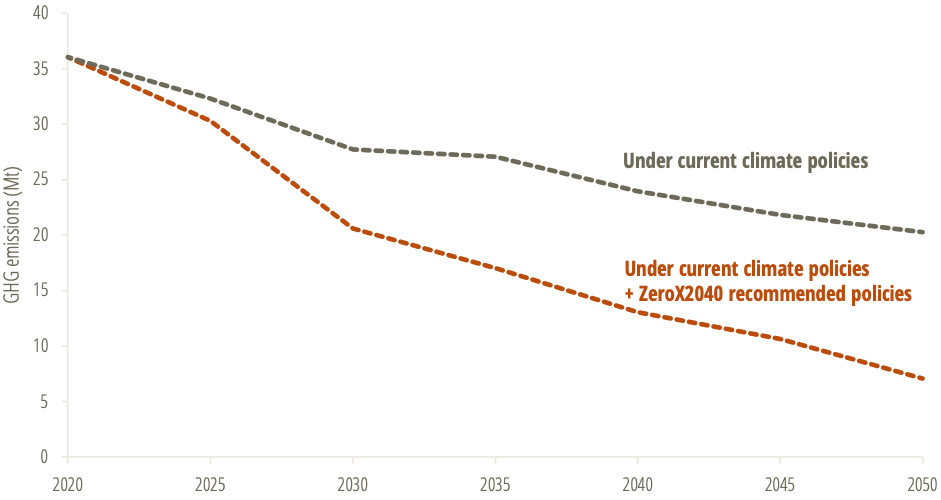
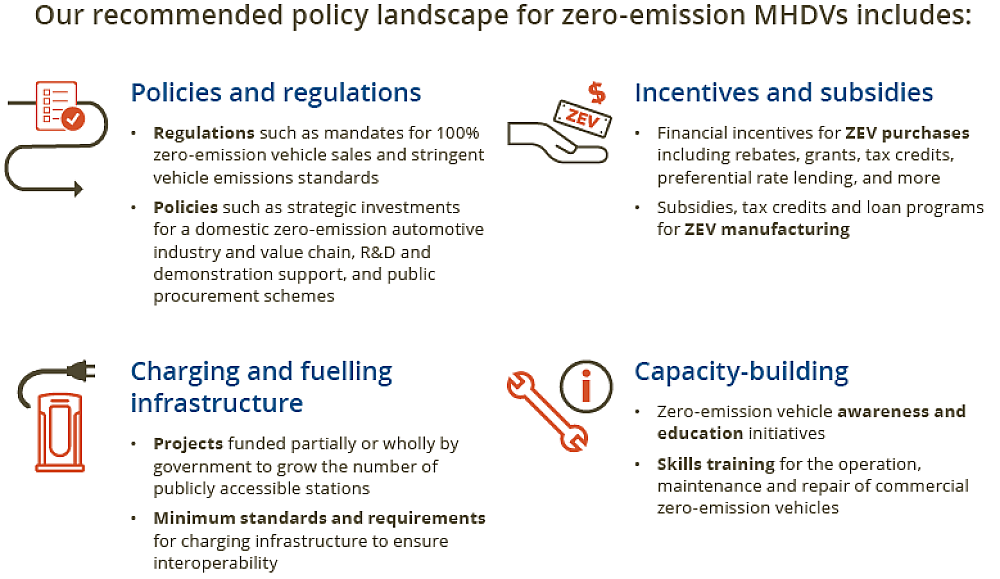
Canada’s commitments
2022 Emission’s Reduction Plan
To reduce emissions from medium-and heavy-duty vehicles (MHDVs), the Government of Canada will aim to achieve 35% of total MHDV sales being ZEVs by 2030. In addition, the Government will develop a MHDV ZEV regulation to require 100% MHDV sales to be ZEVs by 2040 for a subset of vehicle types based on feasibility, with interim 2030 regulated sales requirements that would vary for different vehicle categories based on feasibility, and explore interim targets for the mid-2020s. (2030 Emissions Reduction Plan, p. 57)
12th Clean Energy Ministerial
The Canadian government announced intentions to pursue a global agreement to achieve 100 percent zero-emission MHDV sales between 2040 and 2050. (Global Commercial Vehicle Drive to Net Zero)
Our work
The Pembina Institute has been working on a transportation system free of carbon pollution for almost a decade. In the past few years, we have focused on the movement of goods.
Publications
See all of our transportation publications here.
Articles
See all of our transportation articles here.
Submissions to government
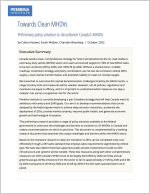 Towards Clean MHDVs
Towards Clean MHDVs
Preliminary policy solutions to decarbonize Canada’s MHDVs
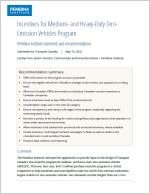 Incentives for Medium- and Heavy-Duty Zero-Emission Vehicles Program
Incentives for Medium- and Heavy-Duty Zero-Emission Vehicles Program
Pembina Institute comments and recommendations
 Municipal actions needed to reduce GHG emissions by electrifying urban delivery
Municipal actions needed to reduce GHG emissions by electrifying urban delivery
Letter to municipal governments in the Greater Toronto and Hamilton Area
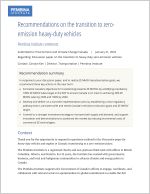 Recommendations on the transition to zero-emission heavy-duty vehicles
Recommendations on the transition to zero-emission heavy-duty vehicles
Submission to Environment and Climate Change Canada
Sponsors
This work is supported by the Pembina Institute’s Urban Delivery Solutions Initiative and:
